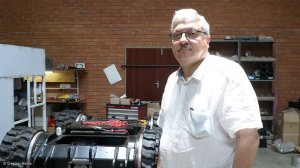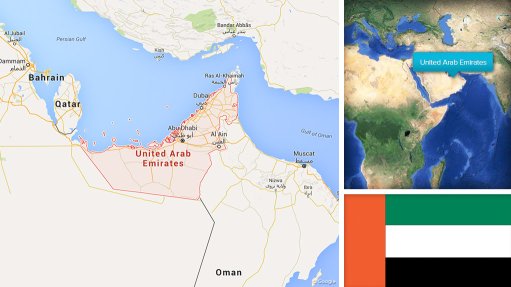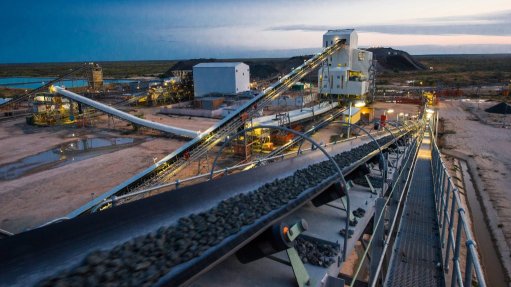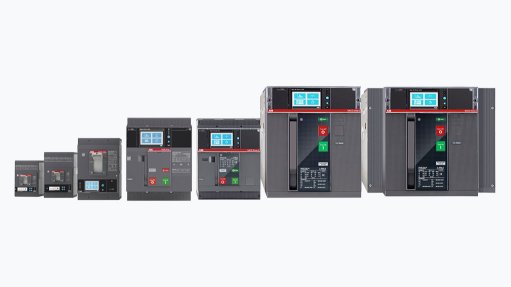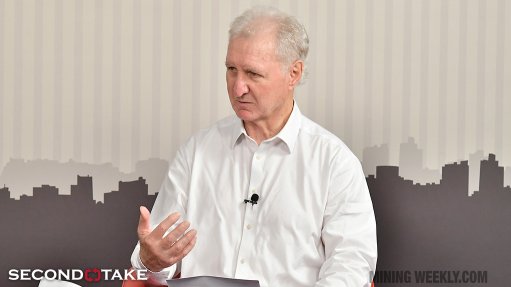Call for better understanding of trackless mobile mining equipment regulations


DANIE BURGER There are currently a number of problems relating to the standards for the testing of brakes and in-service brake testing of trackless mobile mining equipment
Photo by Creamer Media image
Mechanisation of the South African mining sector is a major priority for all stakeholders. However, with the introduction of mechanised mining technologies come several new challenges, including those relating to the brakes and in-service brake testing of trackless mobile mining (TMM) equipment, says local ultra-low-profile mining machinery and equipment supplier CMTI Consulting MD Dr Danie Burger.
He elaborates that, according to the regulations outlined in the Mine Health and Safety Act (MHSA), TMM is defined as the use of any self-propelled mobile machine for the purpose of performing mining, transport or associated operations underground or on surface at a mine, with mobility involving the machine’s movement on wheels, skids, tracks, mechanical shoes or any other device fitted.
This excludes rail-bound equipment, scraper winches, monorail installations, static winches, draglines, winding machinery installations, track-mounted conveyors and
any equipment attached.
The MHSA stipulates that the employer must take reasonably practicable measures to ensure that persons are not injured as a result of brake failure.
It declares that these measures must include ensuring that trackless mobile machines are operated with adequate and effective braking systems; all braking systems are adequately and routinely tested for intended functionality; all braking systems are regularly maintained and that, where a combined braking system is used, the design of the braking system is such that it complies with the requirements for the separate systems.
Besides the regulations, the mandatory code of practice (COP) states that the procedures for testing braking systems to ensure functionality in terms of brake design specifications include the static testing of braking systems and, where appropriate, dynamic-type tests or other tests, as well as the recording and safekeeping of test results for a period to be specified in the COP.
Burger points out that comments added to the COP guideline state that descriptions of the brakes, park brakes and emergency brakes should be included.
“The brake test procedures must be described. Tables should be used. Some of the tables are to be found in the American Federal Regulations, the European Standard, the South African Bureau of Standards, the International Organisation for Standardisation and the SAE International standards. Accumulator systems should be tested for the number of applications and hold time.”
Burger points out that the regulations define a static test as a test carried out to determine the compliance of the brake holding power of TMM equipment measured against the design specification or an appropriate safety standard.
He says that the relative standards for TMM equipment are SANS/ISO 1589 for underground equipment and SANS/ISO 3450 for surface operated equipment.
The current South African industry standards for the testing of brakes include dynamic brake testing for service brakes and ramp testing for service and park/ emergency brakes.
However, Burger believes that there are a number of problems with the existing methods with regard to dynamic break testing, which cause unnecessary damage to the braking systems.
Moreover, Burger says, the dynamic systems only test the service brakes, while the park brake/emergency brakes and accumulators are not tested.
“In light of the work undertaken in terms of the Mine Health and Safety Council’s SIM040502 programme, the accuracy of these dynamic testers can be out by as much as 200% when the vehicles are tested at speeds below 12 km/h,” he asserts.
Burger remarks that testing tractor-trailer combinations is “not advisable”, owing to the risk of jackknifing the combination.
He remarks that the test brake efficiency of the dynamic brake testing systems on the service brake is totally unknown to the industry and that, if the decline is 20% and the brake efficiency, as measured by the dynamic testers, is 35%, the effective brake efficiency is then only 15%, which means the vehicle is noncompliant.
Further, he avers that, with regard to ramp testing, many of the ramps in South African mines were built at the “wrong angle”.
Burger states that ISO 1589 specifies that the ramp must be 4º greater than the steepest angle in the mine. Additionally, he says that the correct ramp procedures are not followed with regard to the service brake, the neutral brake and the park/emergency brake, as the engine must be off and the operator out of the vehicle to ensure the park/emergency brake is not assisted with the service brake.
Meanwhile, Burger notes that an industry work group comprising all mining houses and original-equipment manufacturers (OEMs) has been established.
He says that the focus of the work group is to identify the problems and to come up with a testing solution that will address these challenges.
Burger says that the work group developed the PT50 pull brake tester for vehicles below 50 t.
The major features of this pull brake tester for underground mining vehicles include the test creation of a quasi static test that inflicts no damage on the brake system and a system designed to be inherently safe.
The tests that can be undertaken using the PT50 include the service brake, the neutral brake, and the park/emergency brake with the engine off and the operator out of vehicle. All tests are performed with a 10% overload to enable trending of the brake degradation and all brake wear data is also recorded and measured against the OEM standards.
Burger adds that other features of the pull break tester include the photographing of all tests; a complete report with time and date stamp and photos of every test to make this a legal document; the preloading of all TMM, thereby allowing the operator to simply select the relevant model and type in the plant number and, in the event of failure, an email can be sent directly to the relevant personnel on the mine.
He points out that, for vehicles exceeding 50 t, a pull test is not practical, as the vehicle frames cannot handle the input load.
However, Burger notes that a second brake tester is available, namely the SBT500, which is specifically for use in slab brake testing, where the vehicle to be tested is parked on a moving platform, hydraulically actuated and equipped with the necessary load cells to record the data.
“An important matter is that we distinguish between a system test, where the ramp is good enough, and a compliance test,” he concludes.
Article Enquiry
Email Article
Save Article
Feedback
To advertise email advertising@creamermedia.co.za or click here
Press Office
Announcements
What's On
Subscribe to improve your user experience...
Option 1 (equivalent of R125 a month):
Receive a weekly copy of Creamer Media's Engineering News & Mining Weekly magazine
(print copy for those in South Africa and e-magazine for those outside of South Africa)
Receive daily email newsletters
Access to full search results
Access archive of magazine back copies
Access to Projects in Progress
Access to ONE Research Report of your choice in PDF format
Option 2 (equivalent of R375 a month):
All benefits from Option 1
PLUS
Access to Creamer Media's Research Channel Africa for ALL Research Reports, in PDF format, on various industrial and mining sectors
including Electricity; Water; Energy Transition; Hydrogen; Roads, Rail and Ports; Coal; Gold; Platinum; Battery Metals; etc.
Already a subscriber?
Forgotten your password?
Receive weekly copy of Creamer Media's Engineering News & Mining Weekly magazine (print copy for those in South Africa and e-magazine for those outside of South Africa)
➕
Recieve daily email newsletters
➕
Access to full search results
➕
Access archive of magazine back copies
➕
Access to Projects in Progress
➕
Access to ONE Research Report of your choice in PDF format
RESEARCH CHANNEL AFRICA
R4500 (equivalent of R375 a month)
SUBSCRIBEAll benefits from Option 1
➕
Access to Creamer Media's Research Channel Africa for ALL Research Reports on various industrial and mining sectors, in PDF format, including on:
Electricity
➕
Water
➕
Energy Transition
➕
Hydrogen
➕
Roads, Rail and Ports
➕
Coal
➕
Gold
➕
Platinum
➕
Battery Metals
➕
etc.
Receive all benefits from Option 1 or Option 2 delivered to numerous people at your company
➕
Multiple User names and Passwords for simultaneous log-ins
➕
Intranet integration access to all in your organisation


